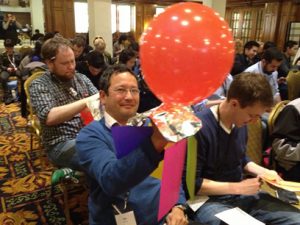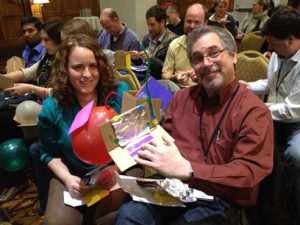Executive Leadership Coach. One-on-one and group business and professional coaching services for high-tech and biotech leaders in the SF Bay Area
Get the Most Out of Brainstorming as Part of the Design Thinking Process

In our work, we take our clients through a design thinking process using our Breakthrough! model. This 4-step process helps leaders generate and execute innovative ideas because it blends practicality with imagination. Through the brainstorming step, it is possible to generate a vast number of ideas – if the session is set up properly. To get the most out of your brainstorming session, consider these critical success factors:
- Be clear about the specific problem upfront. Clarity on the problem guides the brainstorming process.
- Encourage imagination. Unconstrained thinking is the backbone of innovation!
- Break the large group into smaller groups. A large group format limits idea generation as well as lends itself to groupthink and creates a potential scenario in which one person might dominate while others remain silent.
- Each small group member produces an idea…and another…with limited time. First individuals generate ideas alone on sticky notes. Then, in a small group format, the ideas are shared/posted aloud quickly without commentary. Members are then challenged to add a large number of ideas in a limited period of time. With several small groups, the net is cast wide for maximum idea generation potential.
For additional tips on frenetic brainstorming as part of a design thinking process, culling the list of ideas, and other steps in the Breakthrough! model, download our Free Executive Guide to Design Thinking.
MORE





